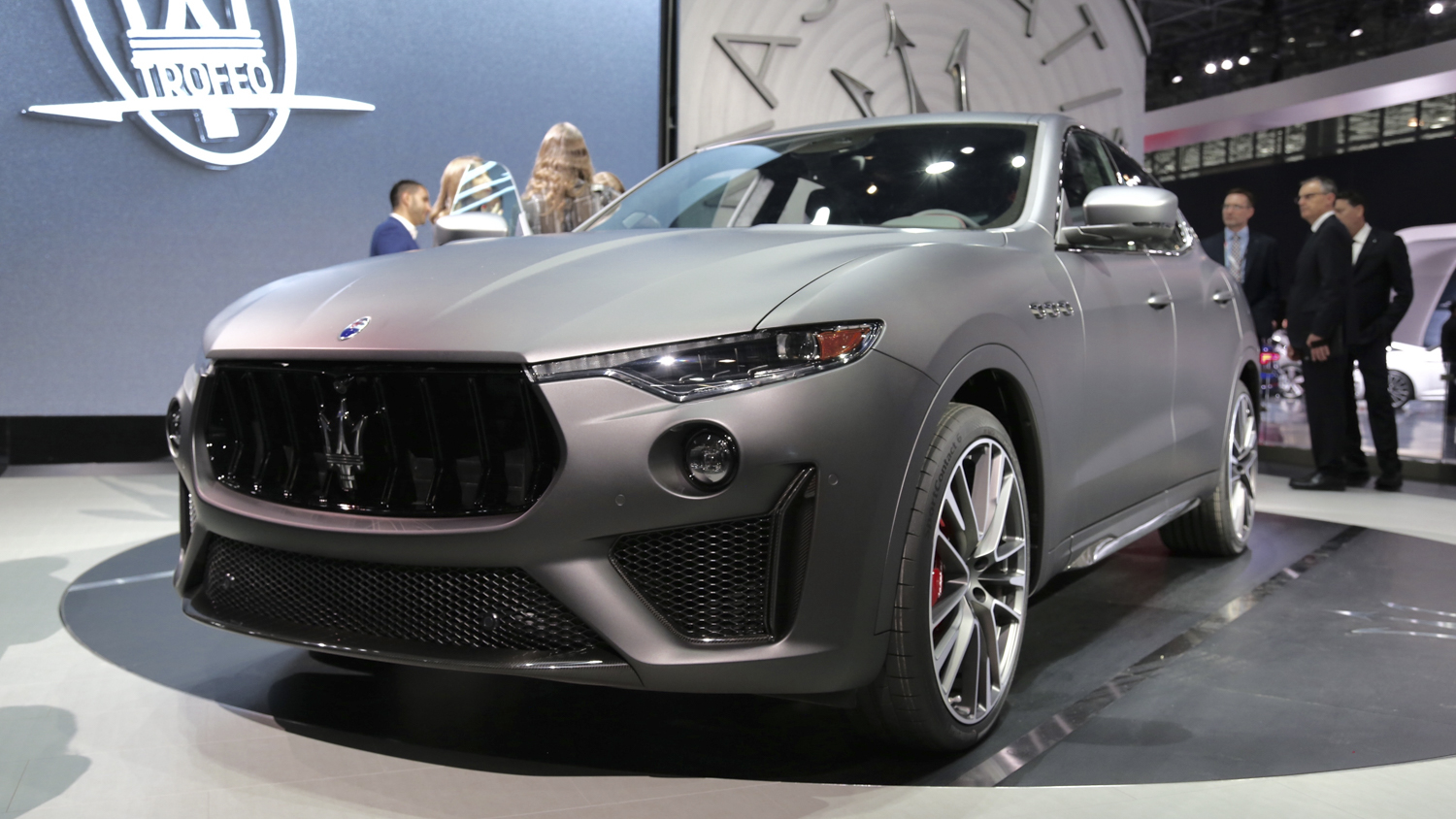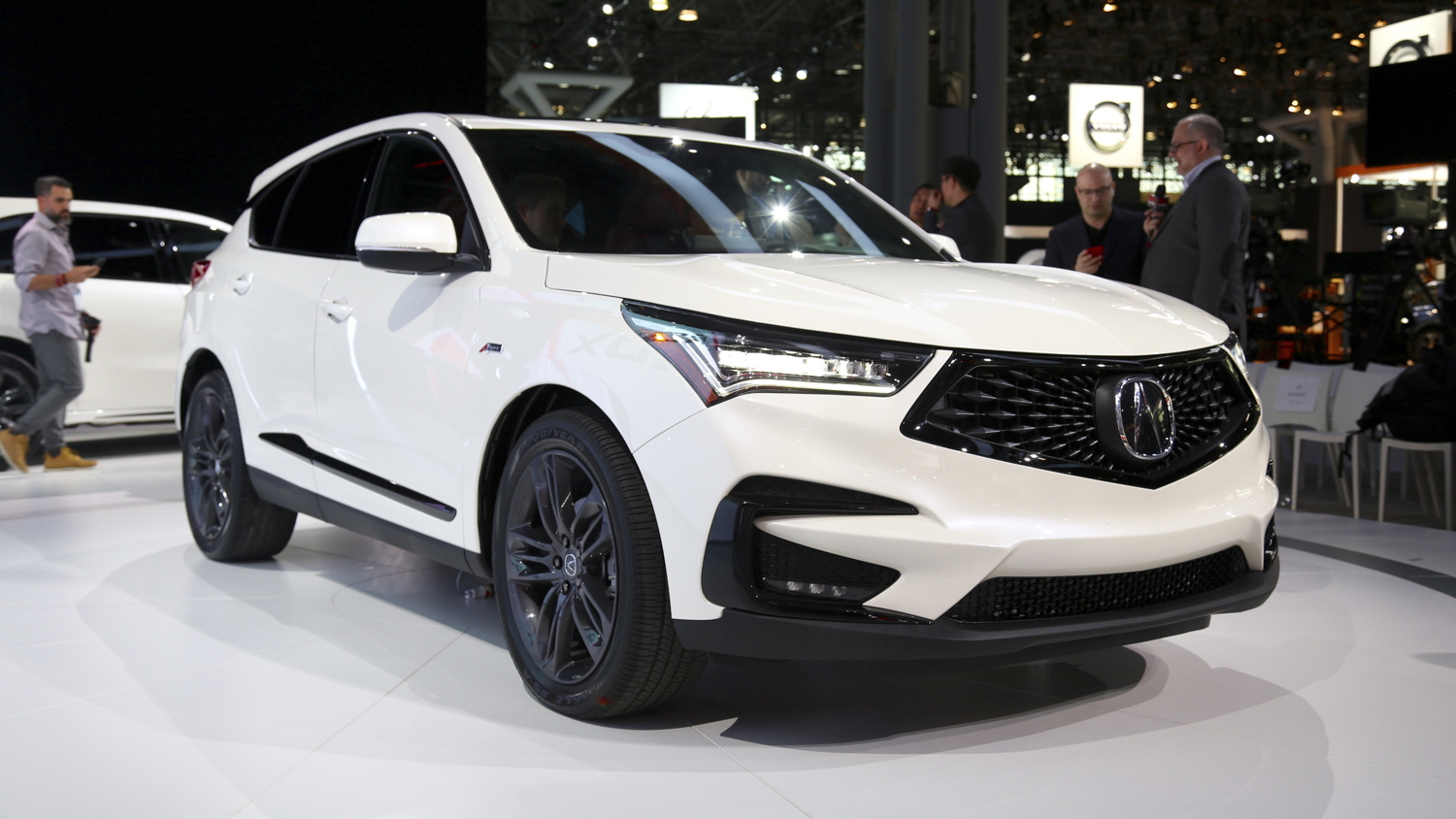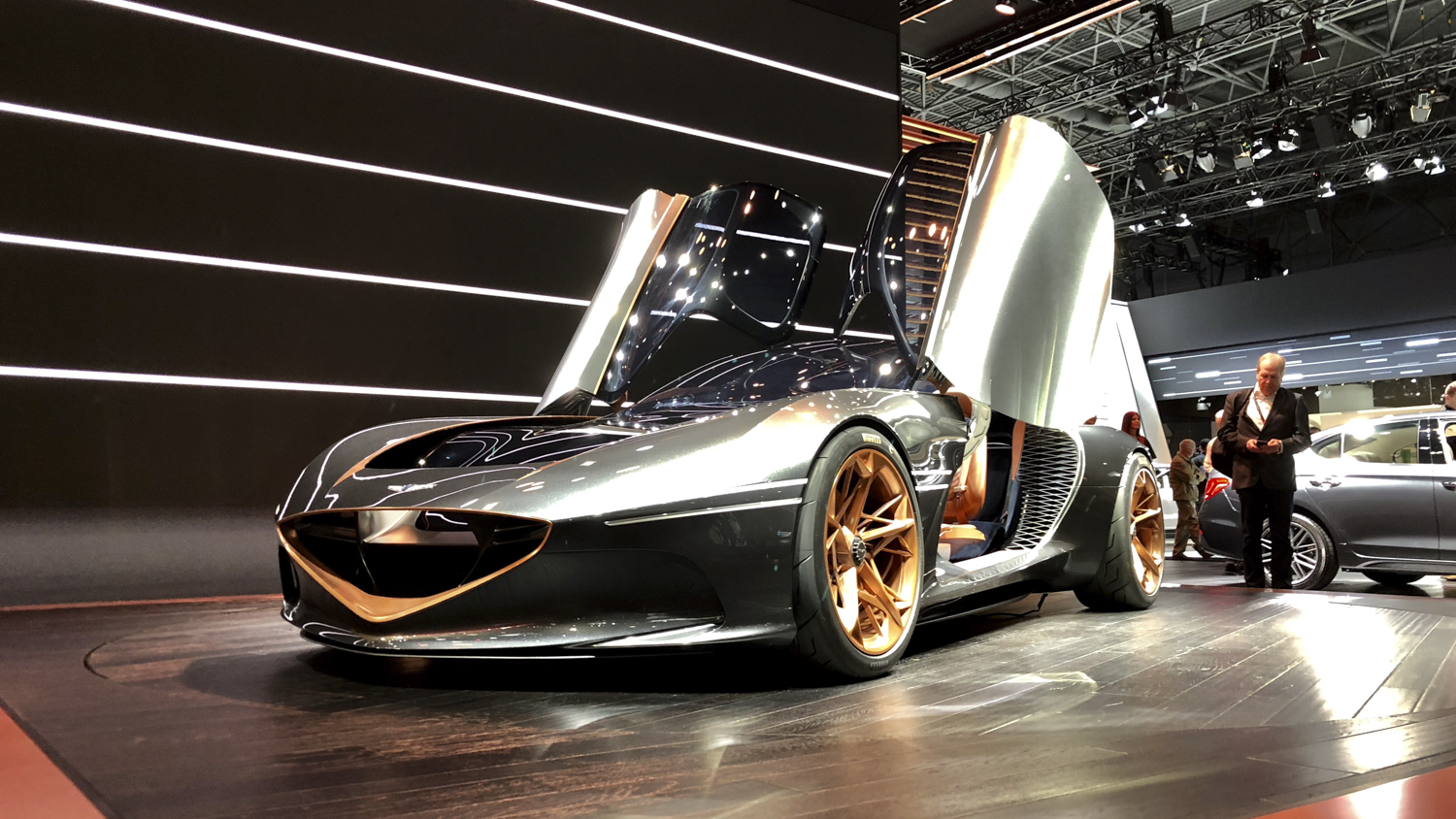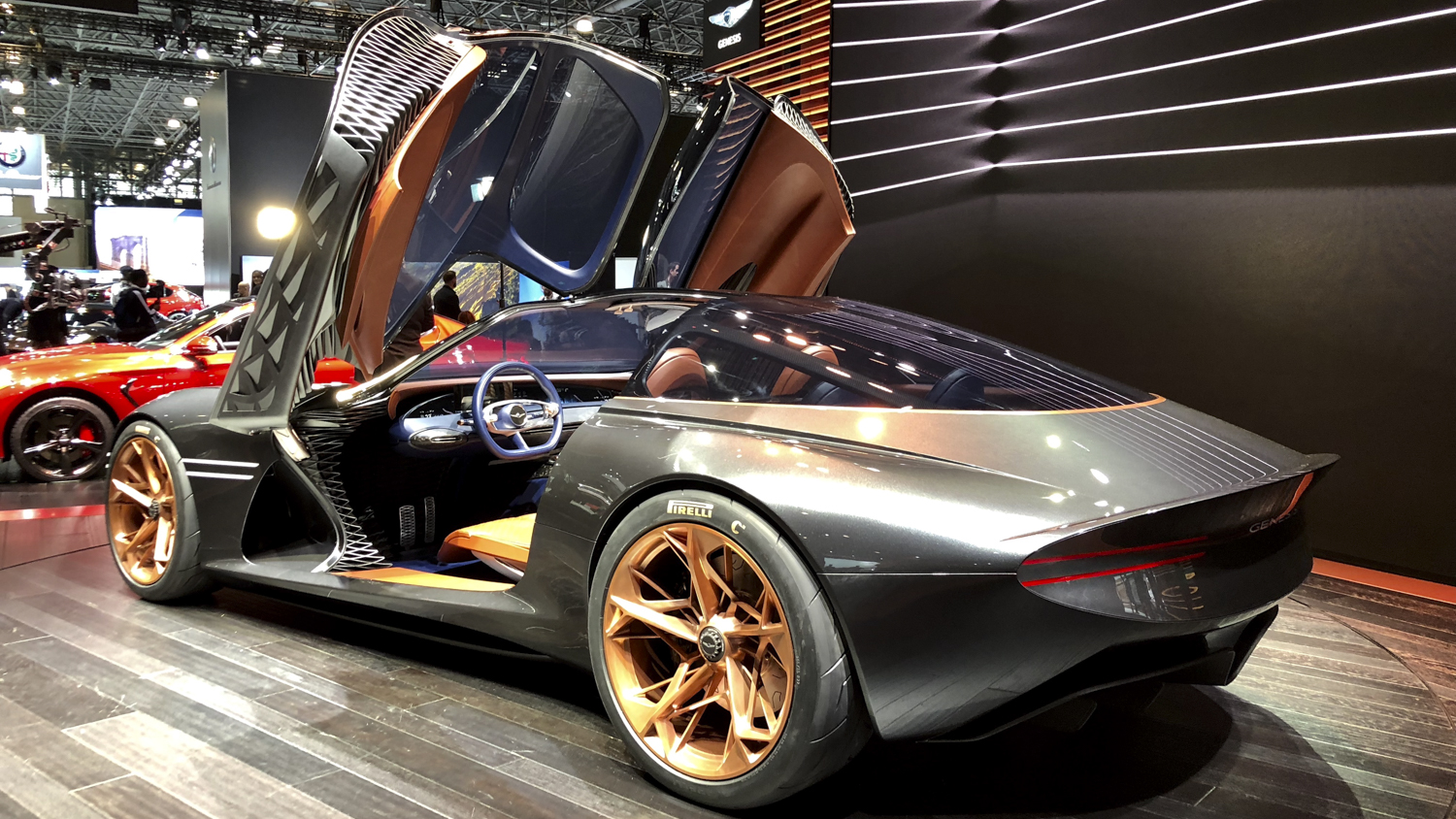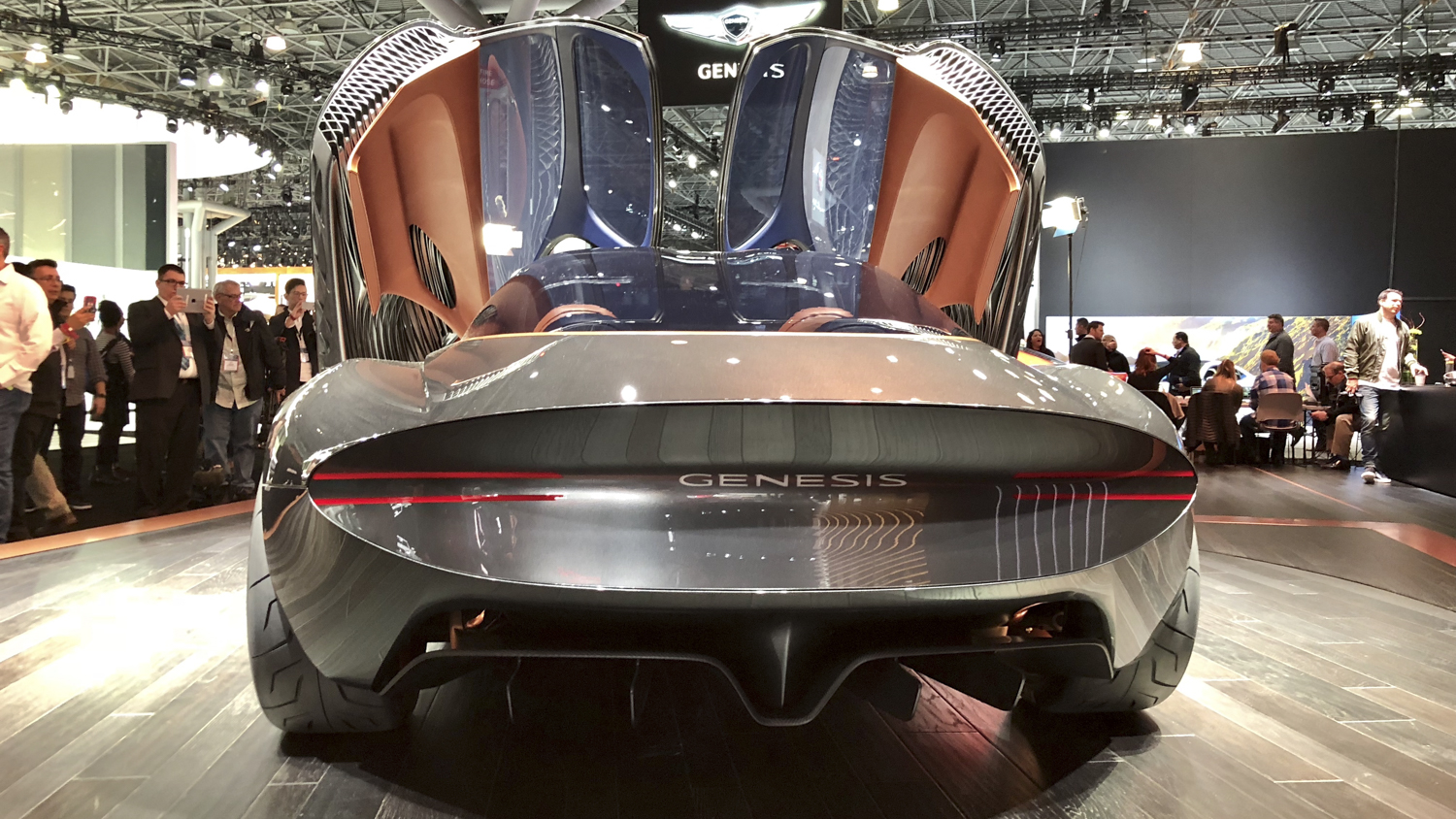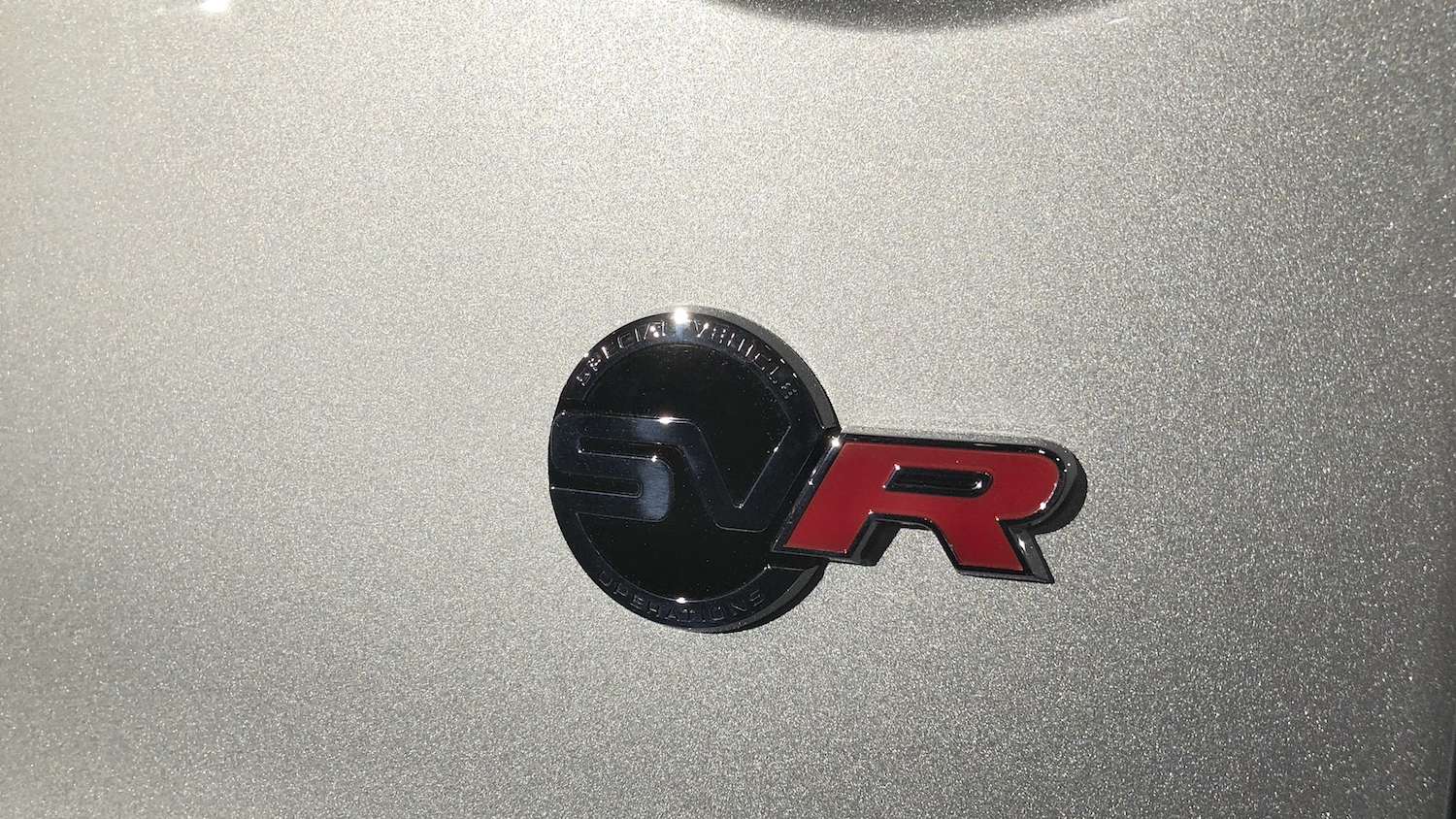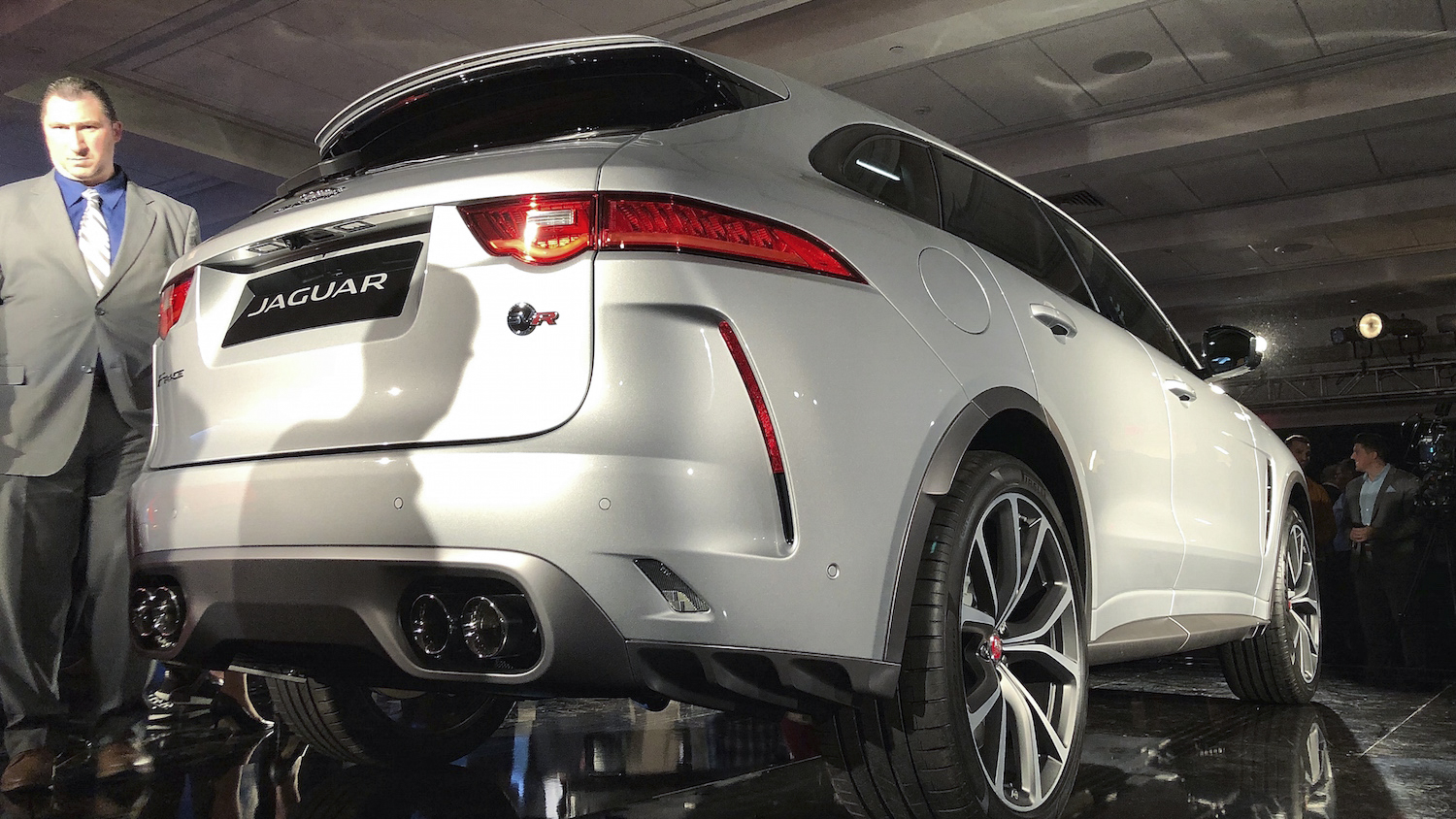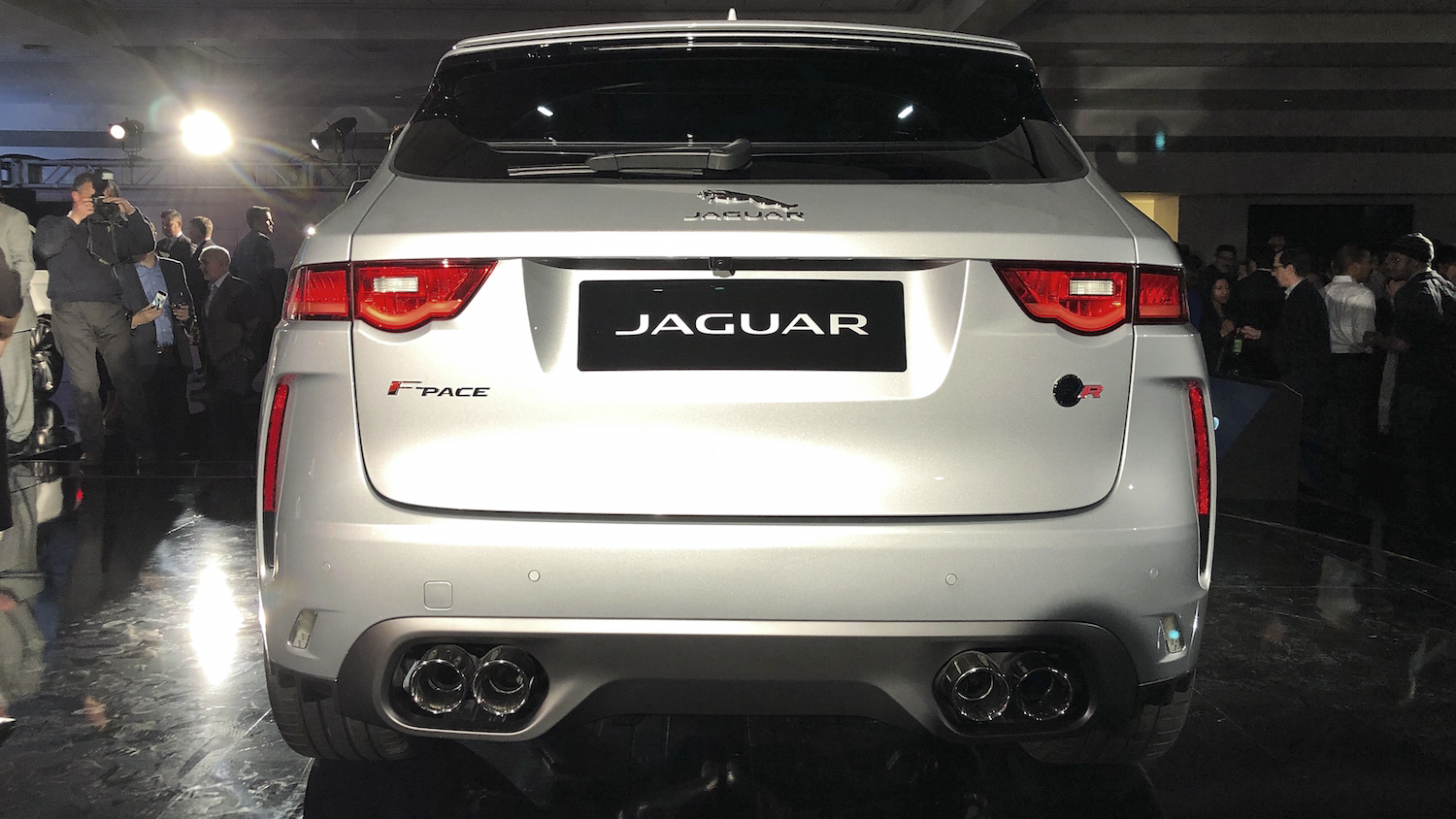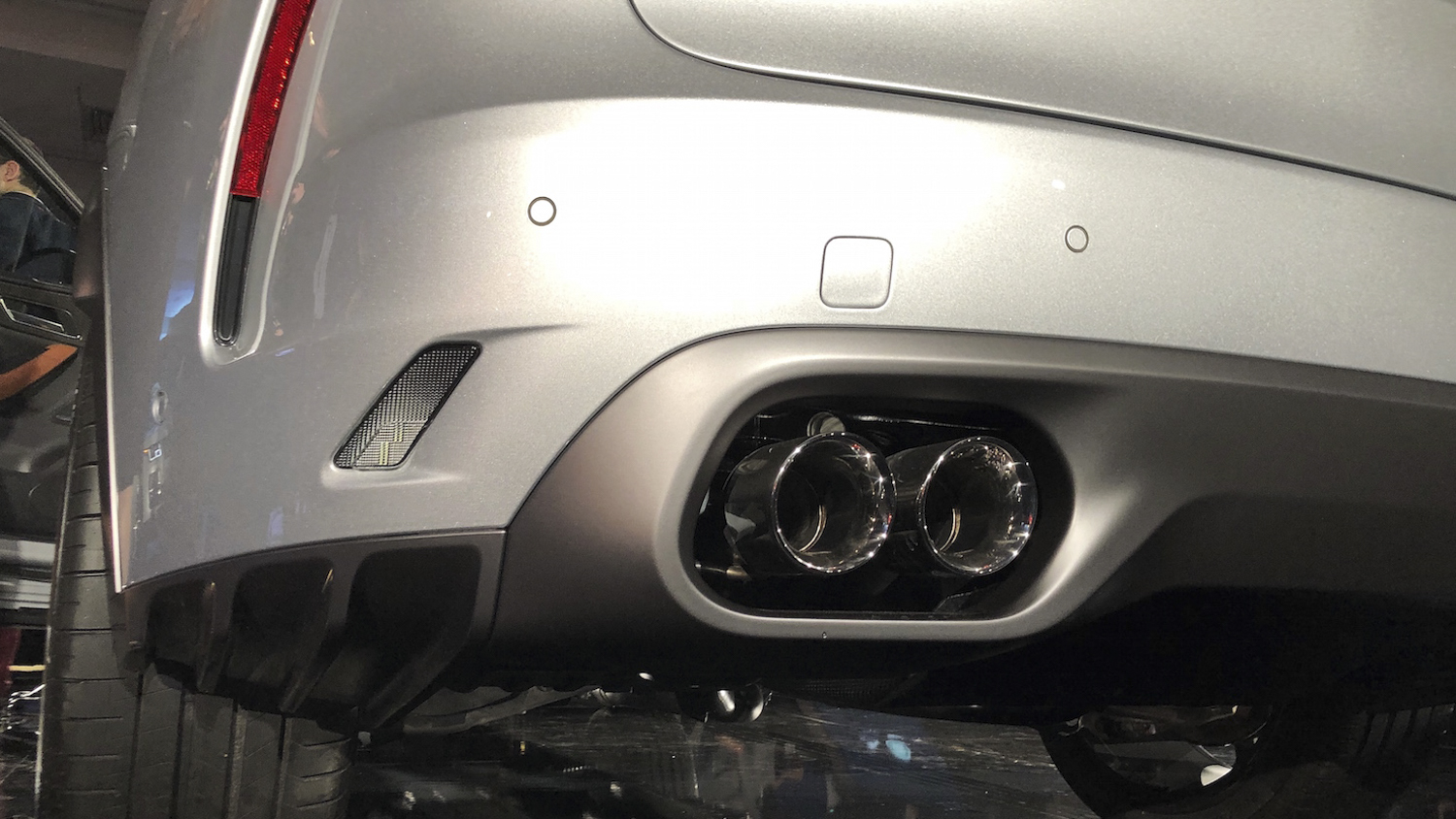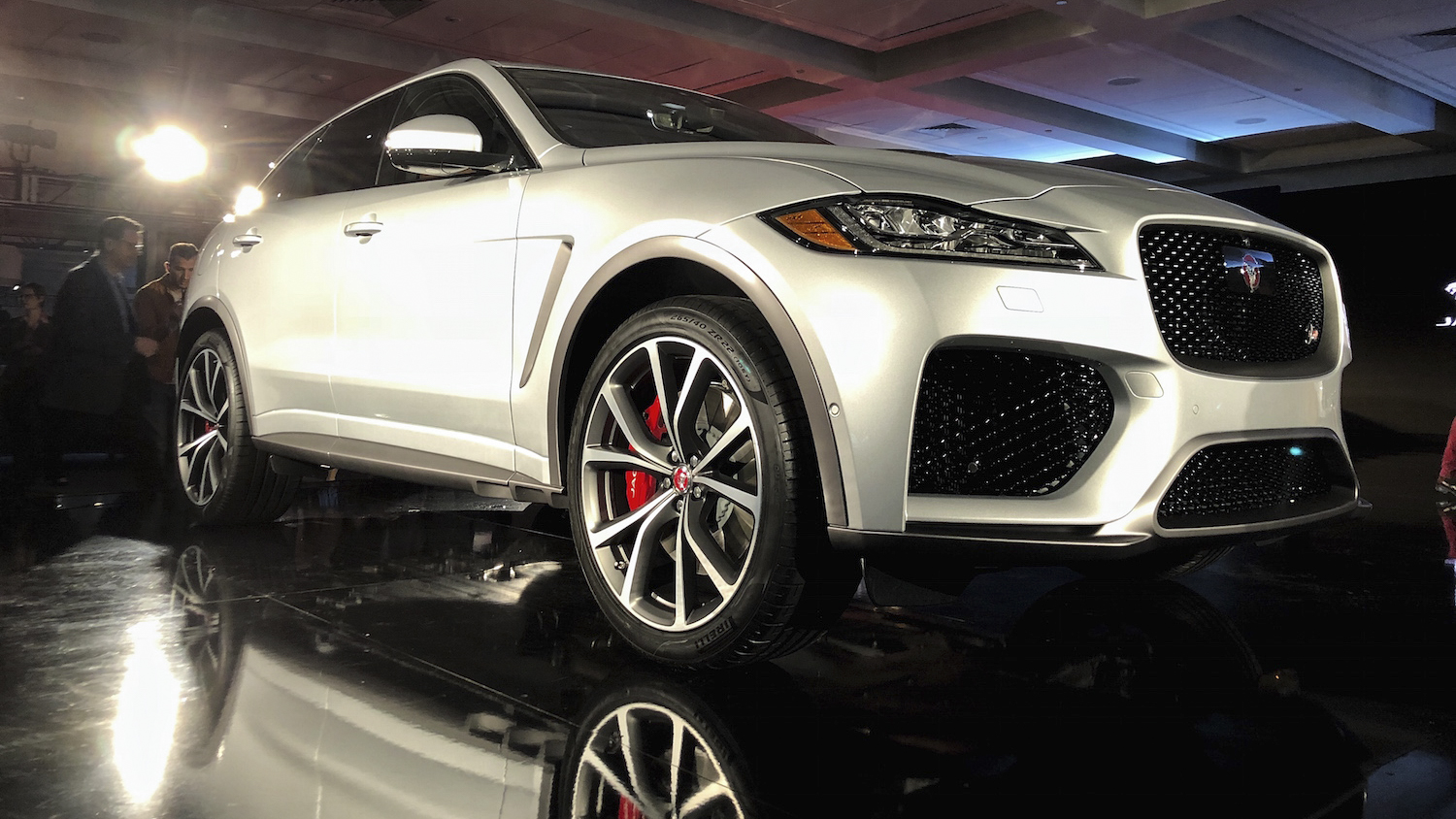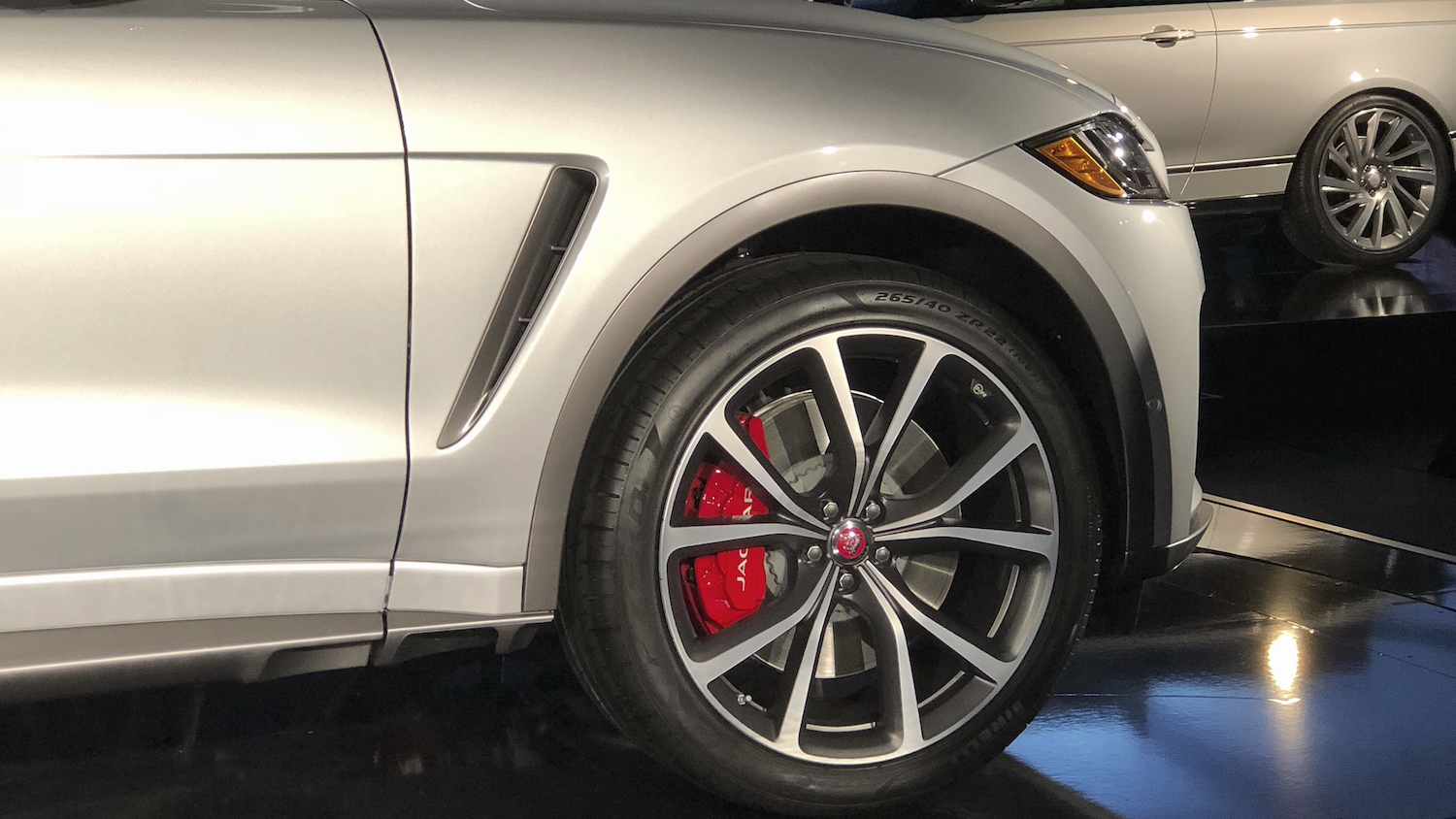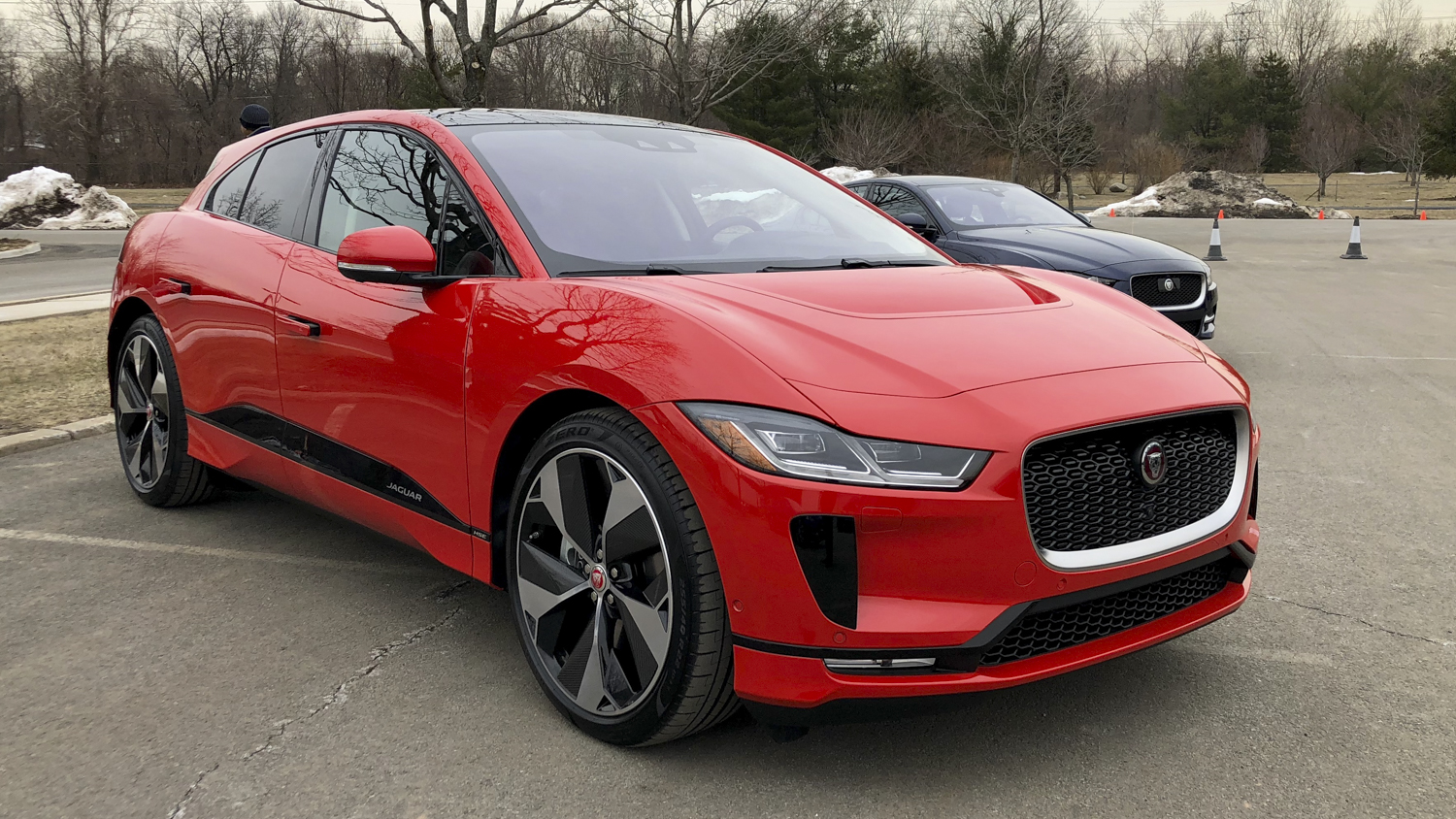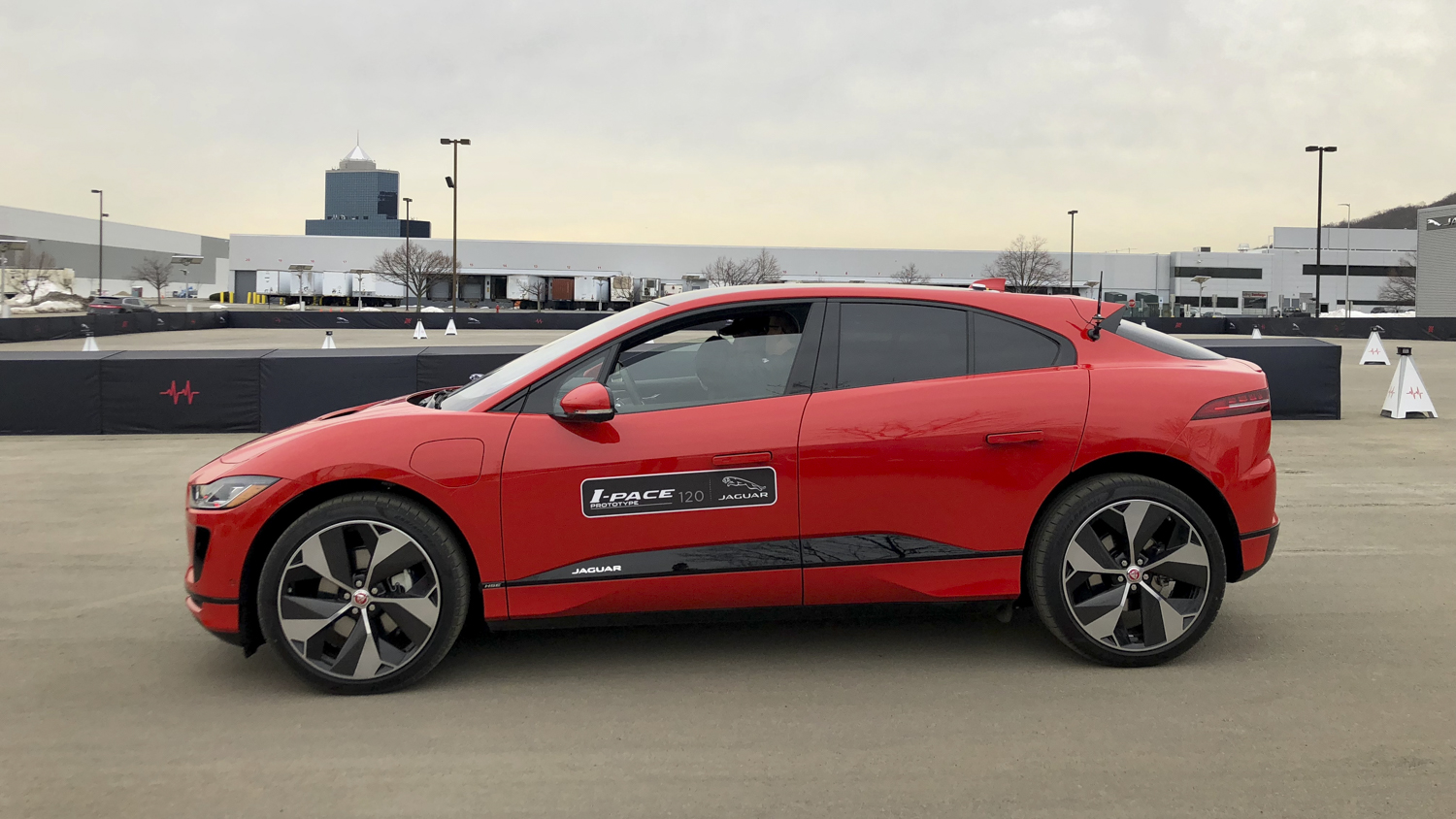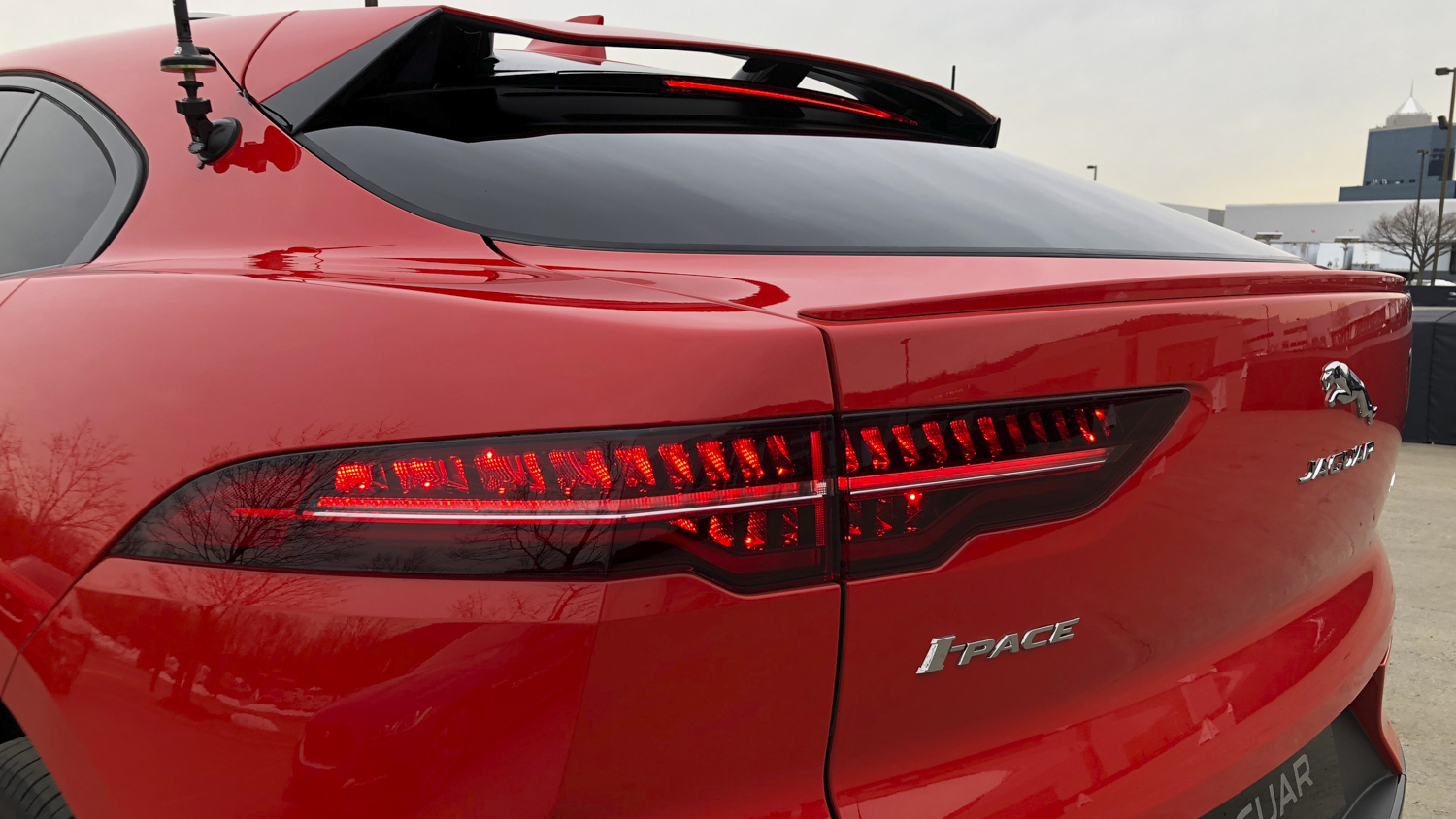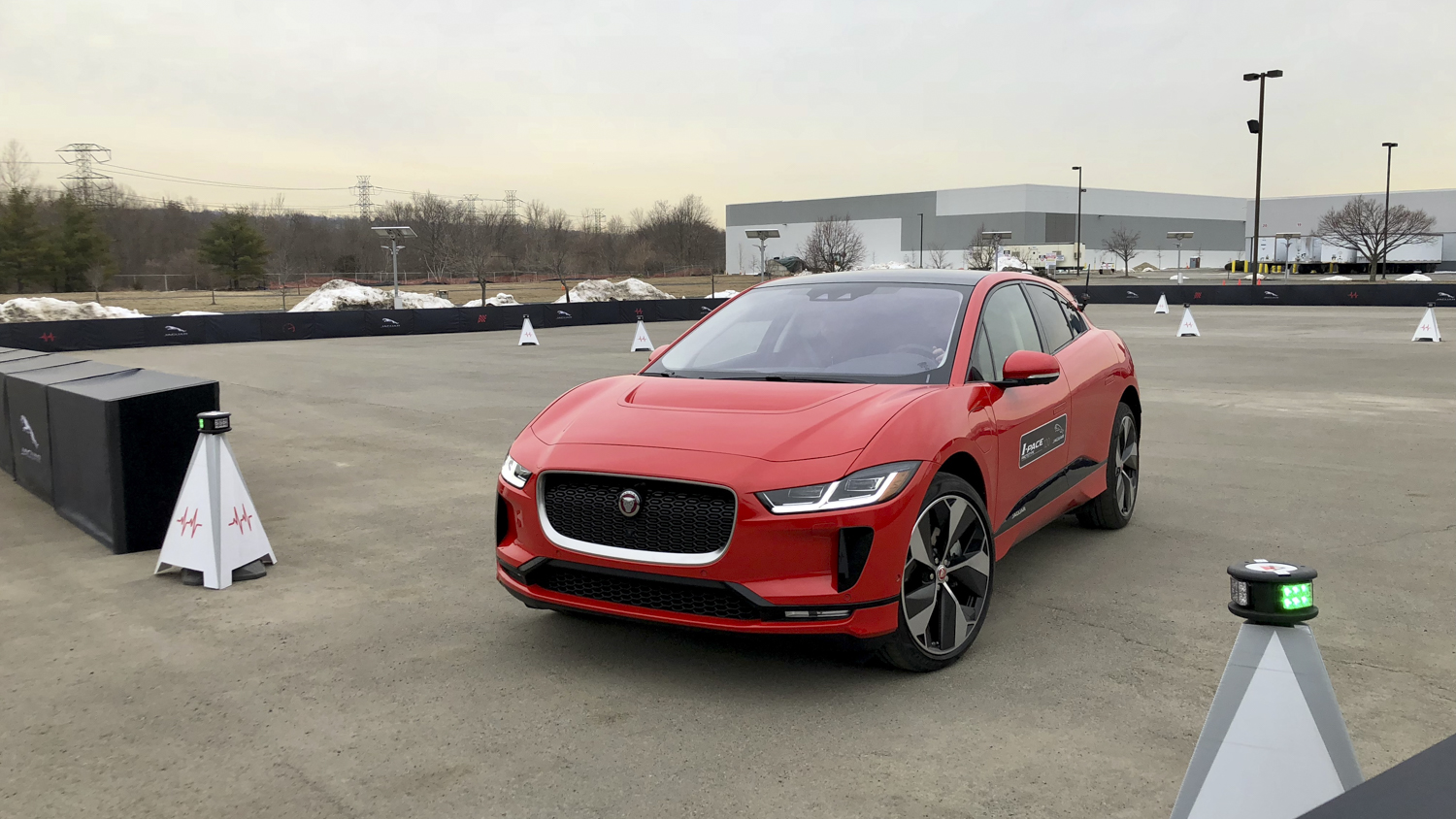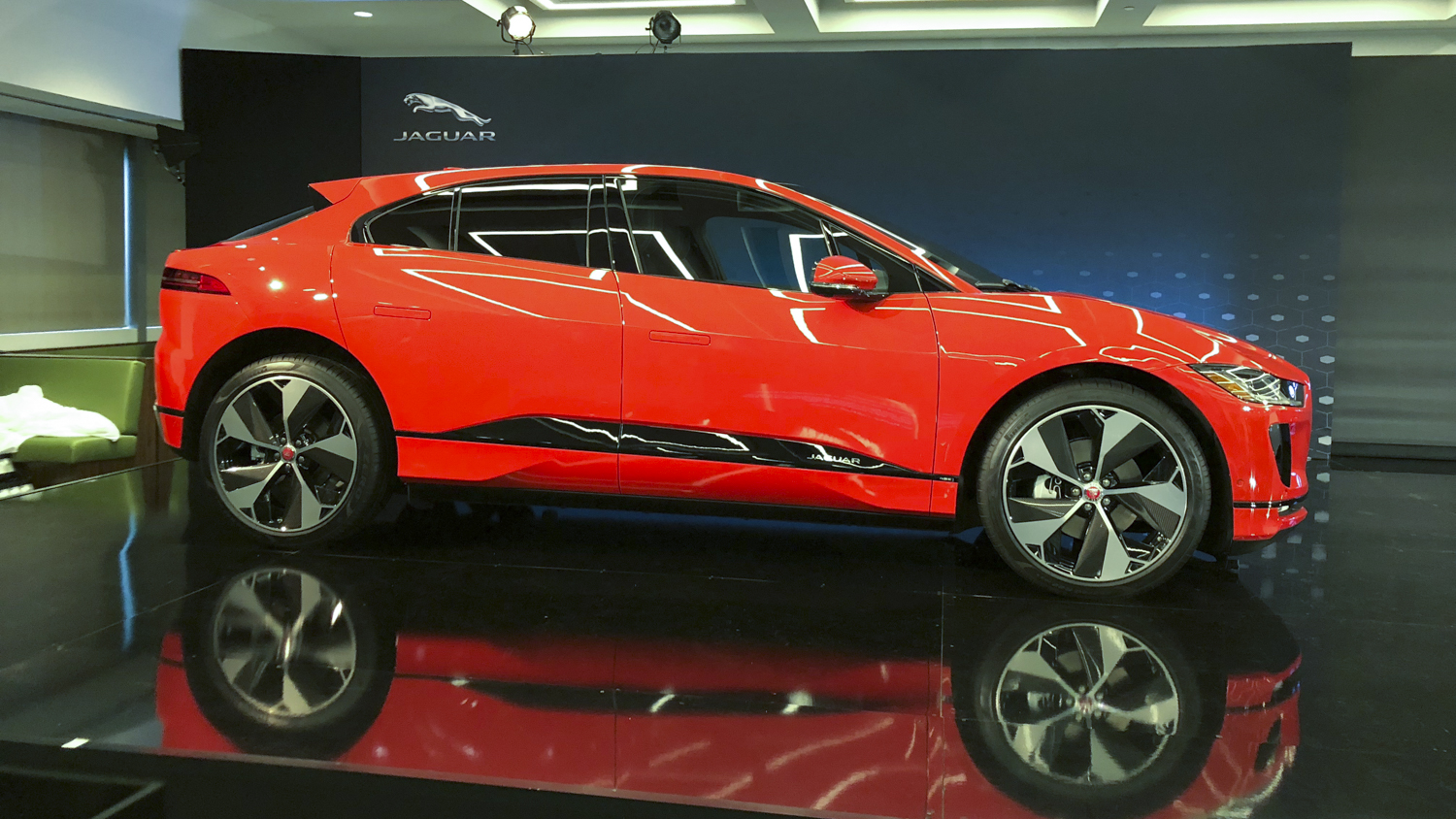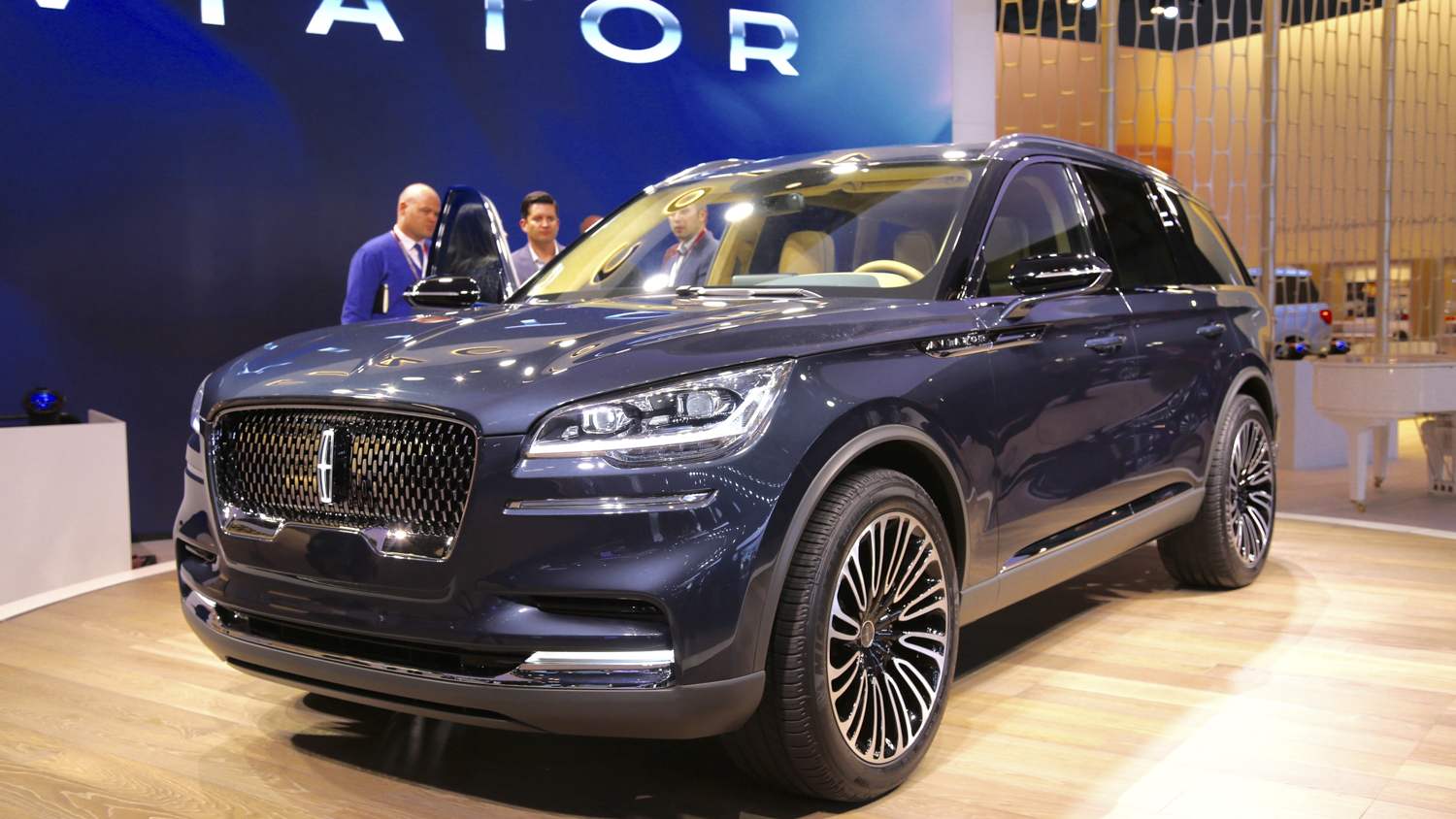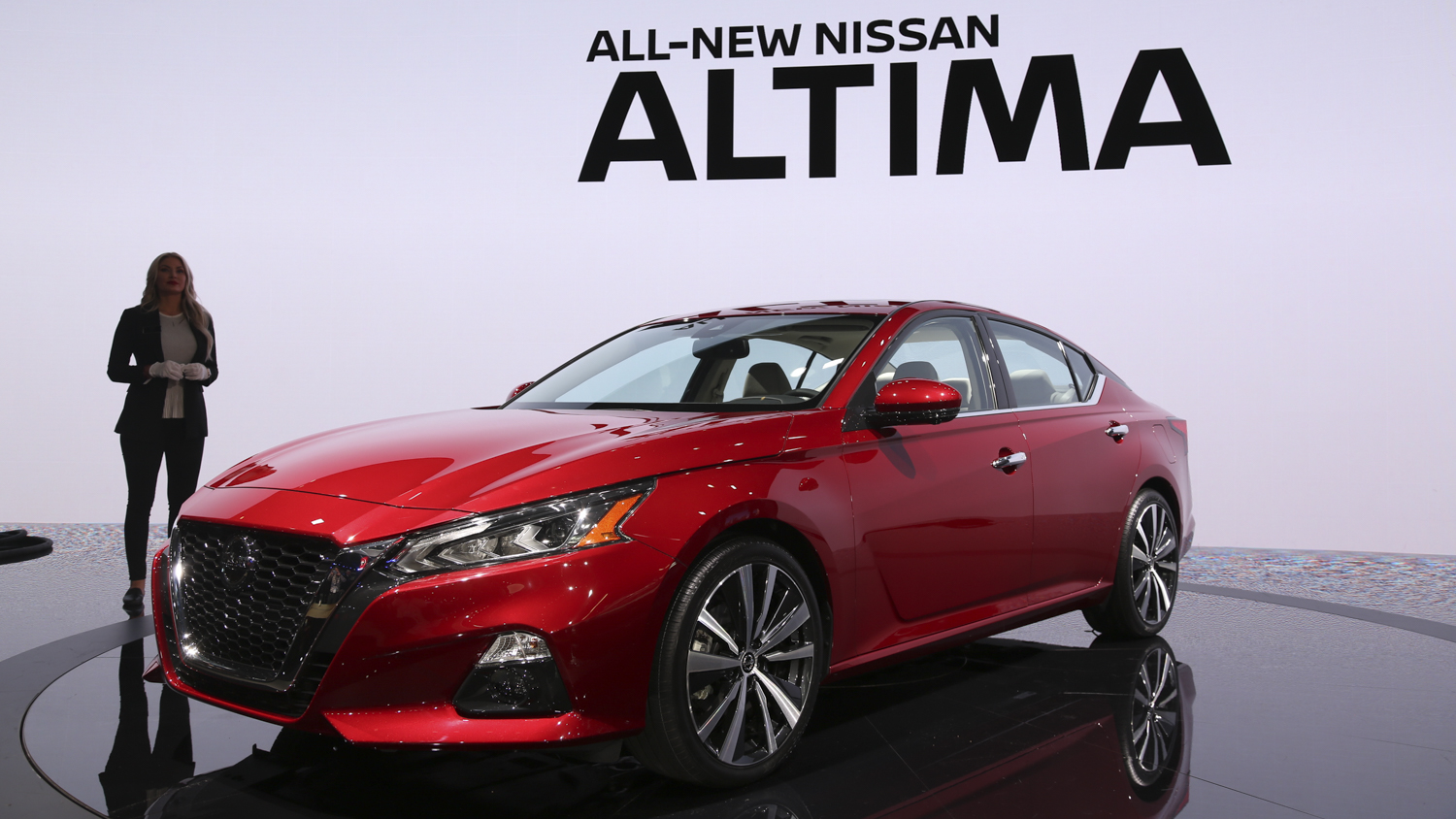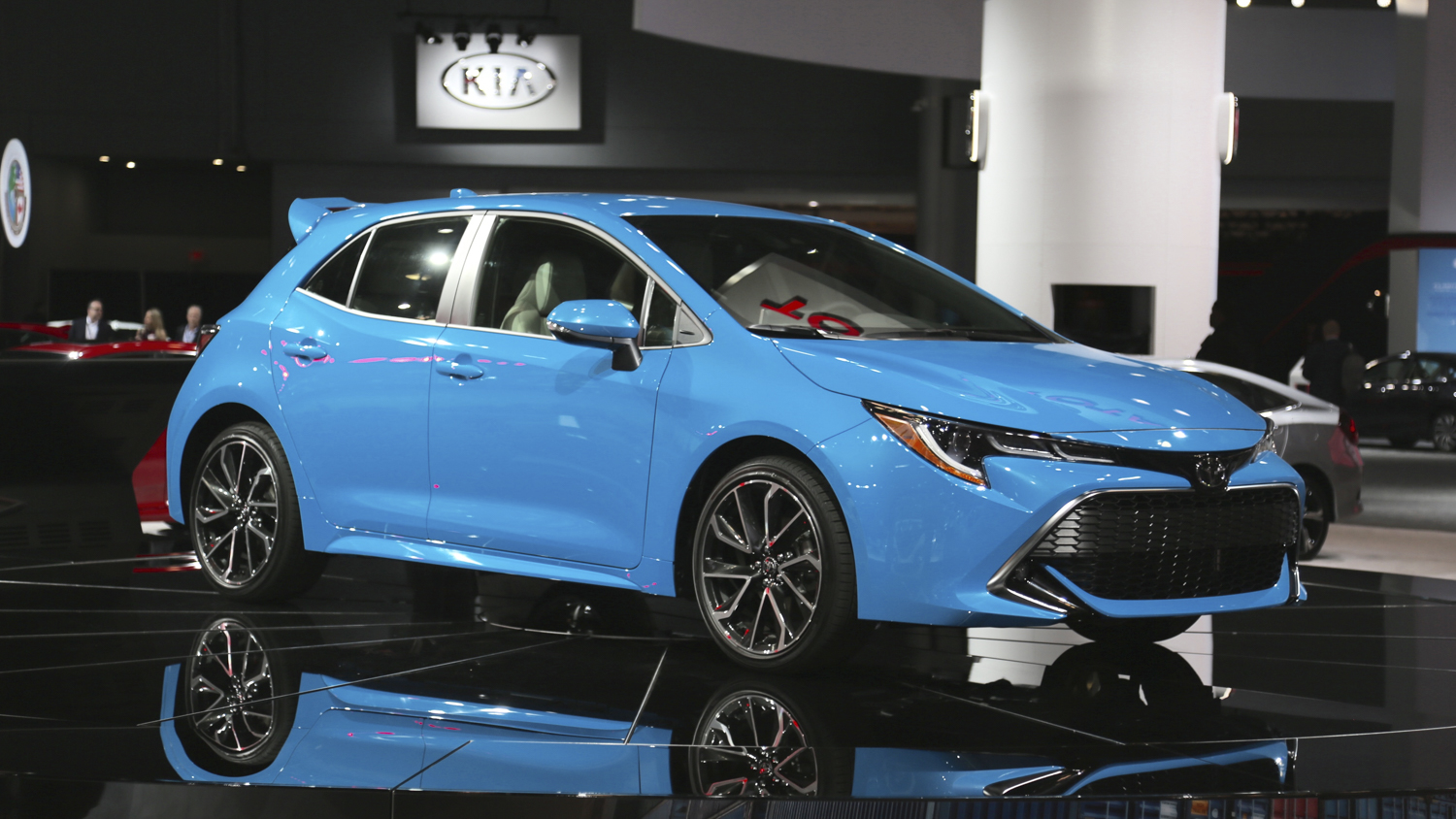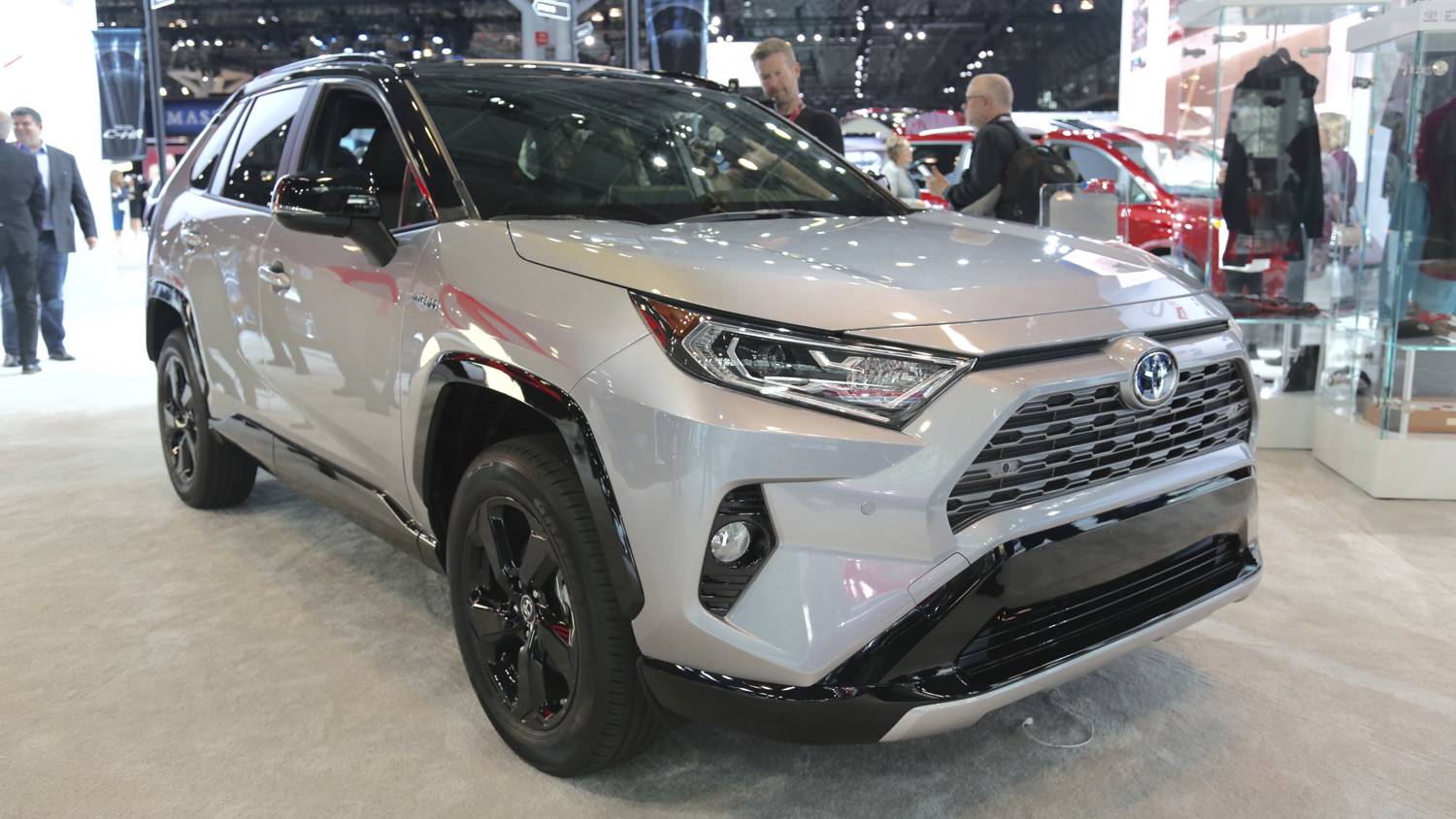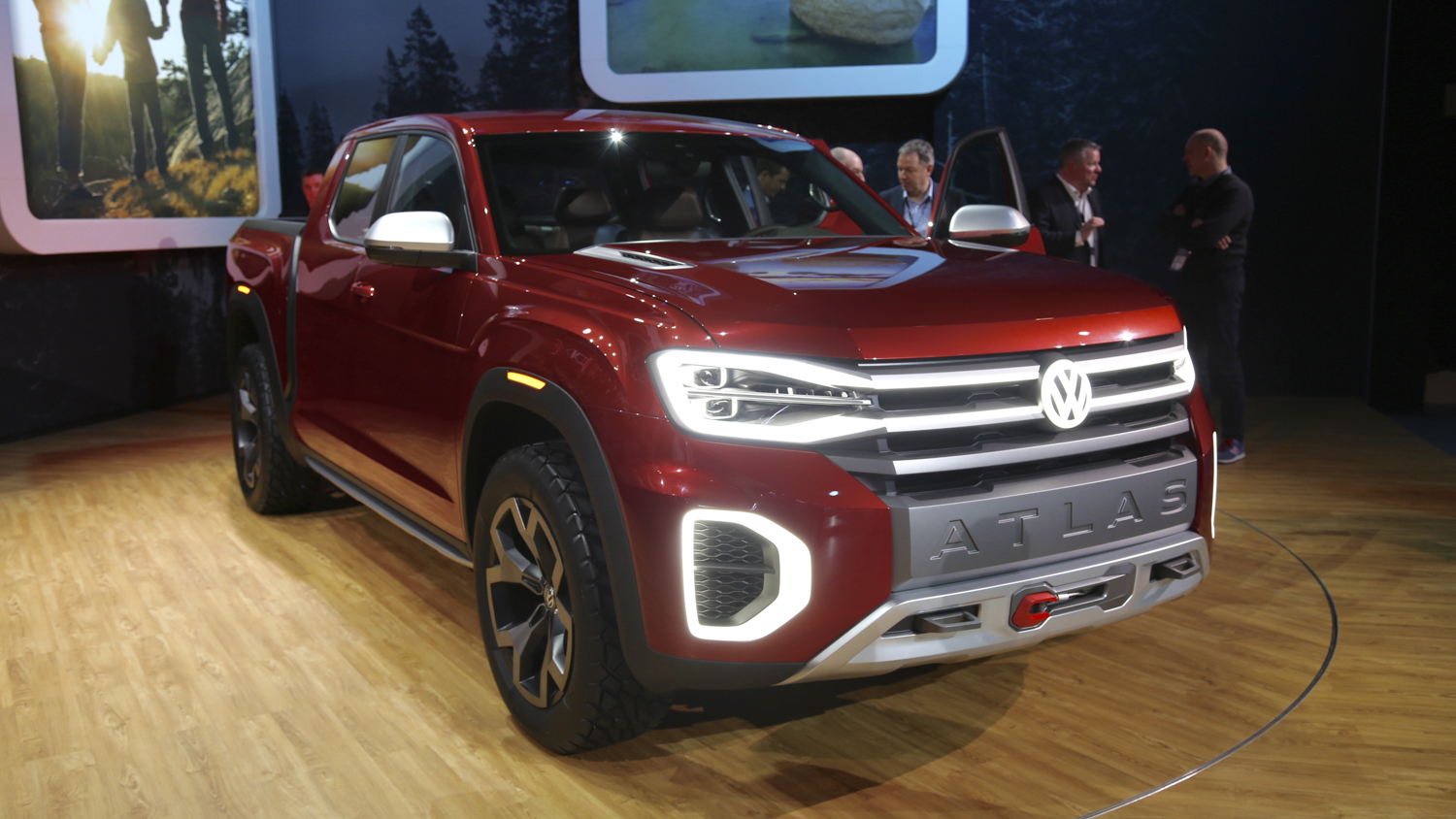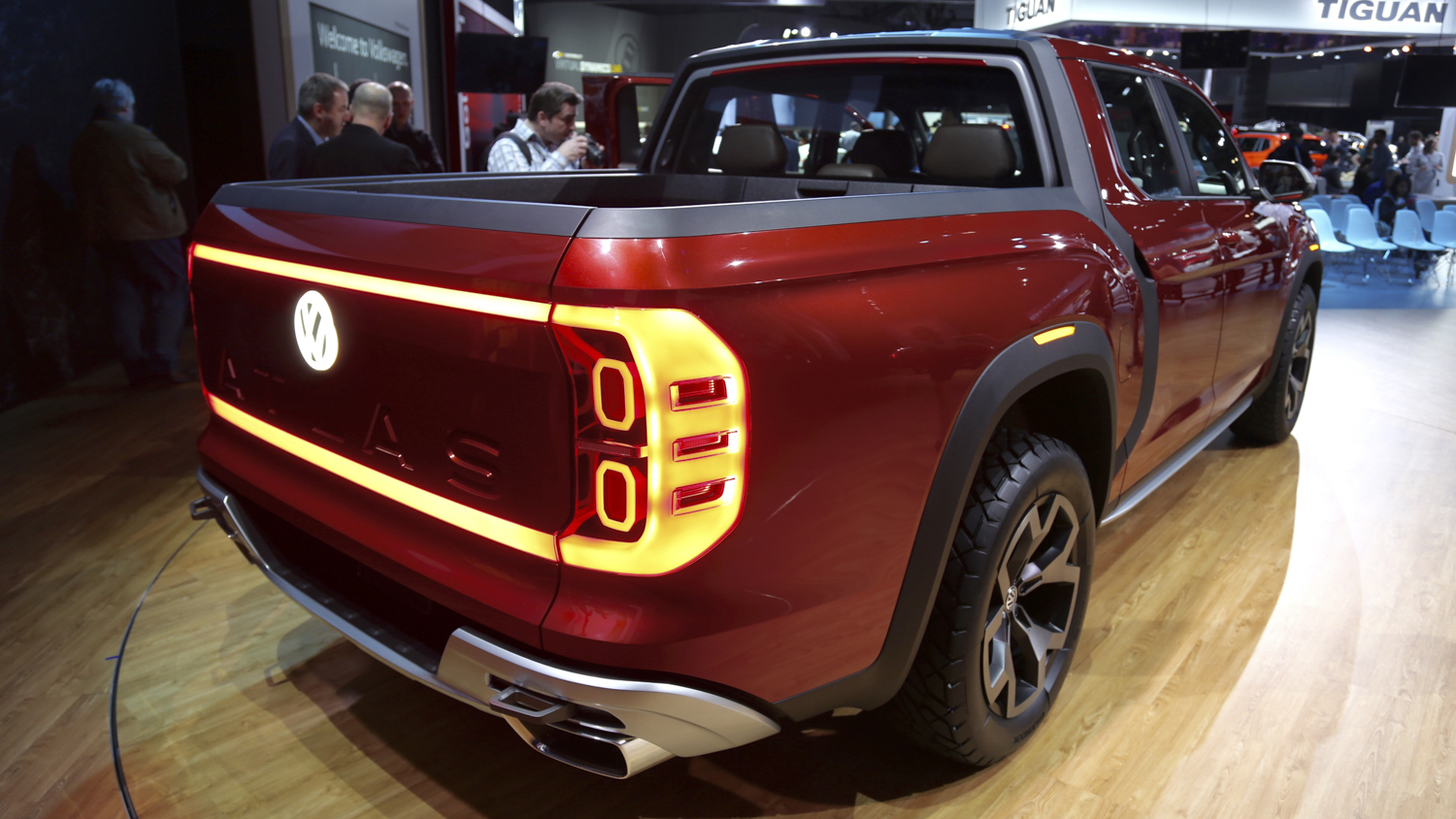To impress someone in a city like New York City — where you can party until 4 a.m. on a Monday, eat the best meal of your life three times a day (at three different restaurants), and get lost in park — you really need to dazzle. Fortunately, The New York International Auto Show is among the biggest spectacles in the automotive world.
Unlike last month’s Geneva Motor Show, which showcased high-dollar vehicle reveals, this year’s New York Auto Show hosted considerably more affordable, mainstream cars. That’s good news for most of us, who can only dream of supercars from behind the wheel of our Honda Accord. That’s not to say this year’s show didn’t pack some fun surprises; more than a few automakers introduced concept vehicles with serious sizzle.
We handpicked five of the best production and prototype cars from among dozens of debuts. Here are the showstoppers 2018:
Jaguar I-Pace
While there are a number of plug-in hybrid SUVs, available at all price points, the Tesla Model X has since stood alone as an all-electric offering. That changes today.
Jaguar is the first mainstream automaker to challenge the Model X with an electric SUV of its own. The 2019 I-Pace is a low-slung, compact SUV powered by a 90kWh battery pack (mounted beneath the floor) and two electric motors (one at each axle). Jaguar’s first production EV boasts a range of 240 miles (3 more than the 75kWh Tesla Model X) and can recharge up to 80 percent of its battery capacity in 40 minutes (via DC fast charging).
The equal parts swoopy and sharp I-Pace exterior is the work of legendary designer Ian Callum. Whether you love or hate the I-Pace’s radical design (consider us big fans), you can’t argue with the vehicle’s slippery 0.29 coefficient of drag and lightning fast acceleration. With 394 horsepower and 512 pound-feet of torque on tap, the I-Pace rockets to 60 mph in a F-Type-rivaling 4.5 seconds. Thanks to its low center of gravity, it handles exceptionally well, too.
Wrap all this up in a $70,000 package (again undercutting the Model X) and we foresee the I-Pace selling quite well for Jaguar.
Toyota RAV4
We’re as surprised as you to find a Toyota RAV4 on this list, but the compact SUV earns its spot. The current generation RAV4, while being America’s fourth best-selling vehicle, is a bit of a bore. The 2019 model year redesign, however, shakes things up nicely.

Borrowing styling cues from the 4Runner and Tacoma (rather than from the new Camry or Avalon), the new RAV4 is significantly more bold and masculine than its predecessor. Beneath the SUV’s new sheet metal is more big news: Apple CarPlay is finally available as part of the Entune 3.0 audio system (Android Auto is still missing). Considering how well the RAV4 has sold without CarPlay, this will surely be a blow to rivals who have stolen customers based on this feature alone.
The new RAV4 will also include driver assistance features like autonomous emergency braking, adaptive cruise control, lane departure alert with steering assist, and automatic high beams across all trim levels. Better styling, better equipment, and the same storied Toyota reliability — looks like RAV4 is still the crossover king.
Lincoln Aviator Concept
If you don’t remember the Lincoln Aviator, it’s probably for the best. Once a rebadged Ford Explorer that represented some of the luxury brand’s darkest days, the Aviator name carries a lot of baggage. Lincoln hopes you’ll forgive its past mistakes, however, and look upon the Aviator Concept with fresh eyes.

At this year’s NY Auto Show, Lincoln previewed a production midsize SUV that will wear the Aviator nameplate proudly. With styling cues borrowed from the all-new Navigator, including flowing lines, a sloping roofline, and some class-leading interior features (including the Navigator’s 30-way power adjustable front seats), the Aviator looks ready to battle elite luxury SUVs.
Under the skin, the Aviator rides on an all-new platform that accommodates standard rear-wheel drive or optional all-wheel drive. Lincoln isn’t ready to divulge full powertrain details yet, but it did say the Aviator will be offered with a gas engine or a plug-in hybrid powertrain based around a twin-turbocharged gasoline engine. We expect the latter will make a healthy amount of power.
Volkswagen Atlas Tanoak Concept
For years, Volkswagen has teased the American market with hints at a midsize pickup. In 2000, the Advanced Activity Concept (AAC) never made the jump to production. Ten years later, the Amorak launched exclusively for overseas markets. This week, the German automaker introduced the Atlas Tanoak Concept. Is this just another midsize pickup tantalizer? Maybe not.
Not only did VW reveal the concept at a U.S.-based auto show, the company publicly stated it is gauging interest for a production model. Call us interested. The Tanoak’s dimensions put it on the larger end of the midsize truck segment, and its unibody platform makes it a direct rival to the Honda Ridgeline. No doubt, VW would want a production version to steal sales from the Toyota Tacoma and Chevy Colorado as well.
Styling is very much in the conceptual realm, but we dig the tall beltline, defined notch at the bed, and wide grille. Power comes from a 3.6-liter V6 engine that channels 276 hp and 266 lb-ft of torque to the four wheels through an eight-speed automatic transmission and Volkswagen’s 4Motion all-wheel drive system. Inside is a spacious cabin with seating for five passengers and tech borrowed from other VW models.
Apart from the ambitious aesthetics, this is all sounding rather realistic. Let’s hope this one pans out.
Genesis Essentia Concept
Some concept cars are thinly veiled production vehicles, missing only a set of street legal tires or taller door mirrors before they’re ready for a dealer showroom (see the Aviator “Concept”). Then there’s the Genesis Essentia Concept, a 2+2 vision of the luxury brand’s future, brimming with technology and style.
The Essentia features an all-electric powertrain and a carbon fiber monocoque chassis (with batteries housed in the central tunnel). Though Genesis is tight-lipped on battery size and total output, the luxury brand did say the Essentia will do 0-60 mph in 3.0 seconds. Styling looks nothing like what we’ve seen from Genesis thus far. Translucent body panels, a cognac leather interior, and ornate bronze wheels helps the concept look distinguished among every other car at the show.
In addition to its dazzling design and performance, the Essentia has brains.
In addition to its dazzling design and performance, the Essentia has brains. Though not fully autonomous, the concept can automatically tailor everything from the seat position to the powertrain based on a given drive route. The Essentia can also talk to smart homes, devices, and other cars.
While a near production-ready concept is a clearer look at what’s to come, a truly off-the-wall creation like the Essentia stretches our imaginations and sets the tone for Genesis amidst a competitive pool of luxury automakers. It also has billionaire doors, so how could we not love it?
Honorable Mentions
This year’s New York Auto Show featured quite the roster of cool or important vehicle reveals. Usually, a top five list is sufficient to recap the highlights, but we feel compelled to mention a few other noteworthy debuts.
First up is the 2019 Acura RDX. Nearly indistinguishable from the handsome Prototype that debuted at January’s Detroit Motor Show, the new RDX boasts an NSX-inspired interior and 3D surround sound system that rivals setups in $200K luxury cars.
Also noteworthy is the Jaguar F-Pace SVR. We saw this one coming a mile away, but that doesn’t make it any less cool. 550 hp wrapped in an award-winning SUV design is one brilliant combination. We can’t wait to scare the pants off some Porsche 911 drivers.
Speaking of fire-breathing SUVs, Maserati stuffed a twin-turbo V8 into its Levante and dubbed the new model, Maserati Levante Trofeo (“trophy” in Italian). How does 590 hp and a 0-60 mph sprint of 3.9 seconds sound? Yep – like a supercar.
Toyota brought it’s A-game to New York. Following up the 2019 RAV4’s line drive, the automaker smacked another base hit with the 2019 Toyota Corolla Hatchback. Compact, stylish, and now available with a six-speed manual transmission, the European-derived Corolla Hatch is almost *gasp* desirable.
Squeaking into the honorable mentions category is the 2019 Nissan Altima. Vastly better looking than the midsize sedan it replaces, the new Altima also packs the Japanese brand’s variable compression engine. Maximizing efficiency or power based on a driving behavior, this sophisticated powertrain gives the Altima a much-needed leg-up in a tough segment.
